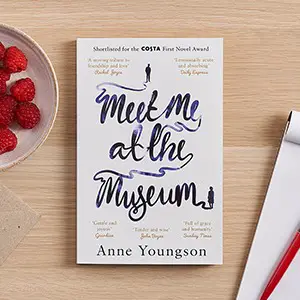In the vast landscape of contemporary literature, Meet Me at the Museum by Anne Youngson stands out as a poignant example of the enduring power of epistolary novels. This modern take on the classic form redefines how letters can weave together the lives of two seemingly disparate individuals, creating a narrative that is both intimate and expansive. We can delve deeper into what makes this novel a compelling read and a remarkable contribution to the epistolary genre.
The Epistolary Tradition and Its Modern Revival
Epistolary novels, characterized by their use of letters, emails, or diary entries to tell a story, have a rich history in literature. Classics like Samuel Richardson’s Pamela and Bram Stoker’s Dracula showcased the format’s ability to provide personal insights and multiple perspectives. In Meet Me at the Museum, Youngson revives this tradition with a contemporary twist, using letters exchanged between Tina Hopgood and Anders Larsen to explore themes of regret, hope, and the unexpected connections that define our lives.
The Emotional Resonance of Letters Meet Me at the Museum
One of the strengths of epistolary novels is their ability to convey the authentic voices and emotions of their characters. We can analyze how Youngson crafts the correspondence between Tina and Anders to evoke deep emotional responses from readers. For instance, sentiment analysis helps us understand the emotional journey of the characters, highlighting their transformations as they open up to each other through their letters. This analysis reveals the subtle shifts in tone and language that mirror their growing intimacy and trust.
Character Development Through Correspondence
In Meet Me at the Museum, character development is intricately tied to the epistolary format. Tina, a farmer’s wife in England, and Anders, a museum curator in Denmark, begin their correspondence with a sense of formality and distance. As their letters progress, we witness their personalities and vulnerabilities unfold. Getting insights into how their relationship deepens over time. This gradual revelation of character mirrors real-life communication, making their bond believable and relatable.
Enhancing Reader Engagement
The use of letters in Meet Me at the Museum creates a unique reading experience that engages the audience on multiple levels. Each letter acts as a cliffhanger, prompting readers to eagerly anticipate the next exchange. This format also invites readers to become part of the conversation, imagining their responses and reflections. Analyzing factors such as word frequency, sentence length, and narrative pacing to understand why the novel is so captivating.
Thematic Depth and Literary Significance
Meet Me at the Museum delves into profound themes such as the passage of time, the search for meaning, and the redemptive power of human connection. We can identify and explore these central themes within the text. This analysis reveals how Youngson uses the epistolary format to juxtapose the characters’ internal and external worlds, creating a rich tapestry of thoughts and experiences that resonate with readers on a deep level.
Conclusion
Meet Me at the Museum is a testament to the timeless appeal of epistolary novels and their ability to convey the intricacies of human relationships. We can appreciate the novel’s craftsmanship in capturing the emotional and psychological depth of its characters. Anne Youngson’s modern epistolary narrative not only honors the tradition of letter-writing in literature but also revitalizes it, offering readers a heartfelt exploration of love, loss, and the unexpected connections that shape our lives.








